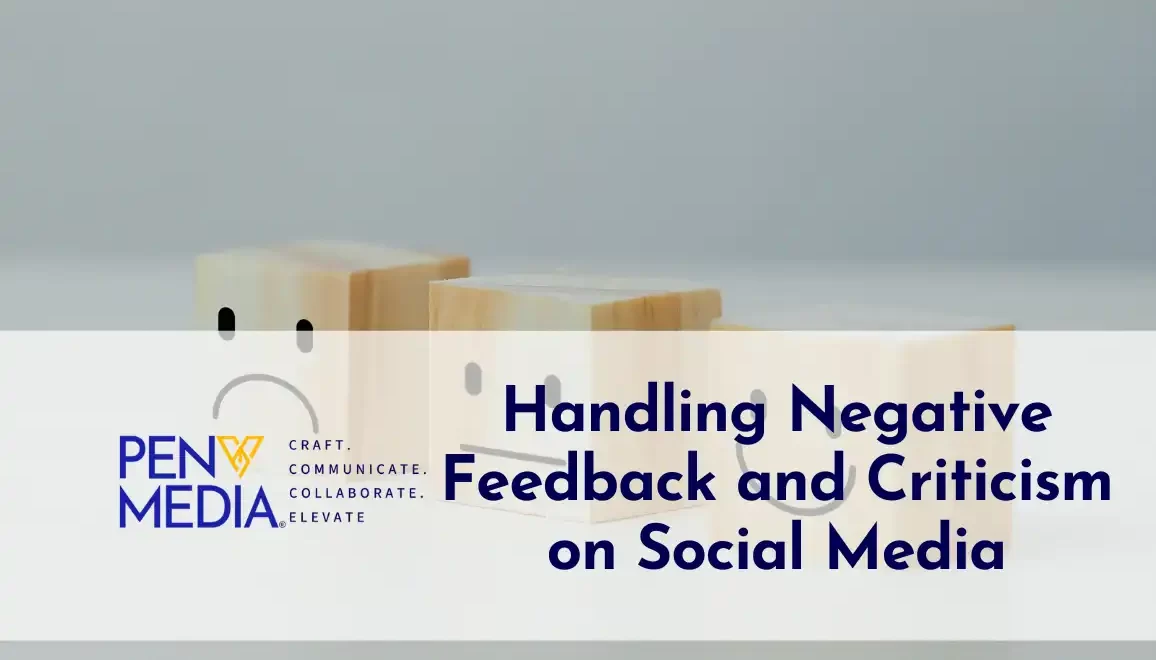Handling negative feedback and criticism on social media is an inevitable part of building a personal brand. Your response to these comments can greatly impact your reputation. It will also affect your relationship with your audience. Here’s a comprehensive guide on how to manage negative feedback and criticism on social media effectively.
1. Stay Calm and Collected
Here’s how to keep your cool:
- Pause Before Responding: Take a moment to breathe and process the feedback before reacting. This helps you avoid responding impulsively or emotionally.
- Don’t Take It Personally: Understand that negative feedback is often about the situation or content, not you as a person. Separate your personal feelings from the criticism.
2. Assess the Feedback
Not all negative feedback is the same. Assess the comment to determine its nature and validity:
- Constructive Criticism: This type of feedback offers specific, actionable suggestions for improvement. It’s valuable for growth and should be taken seriously.
- Unconstructive Criticism: These comments are often vague, rude, or meant to provoke. They may not provide any useful insights but can still impact your reputation if left unaddressed.
- Trolling and Abuse: Some comments are purely meant to harass or provoke a reaction. These should be handled differently than genuine feedback.
3. Respond Professionally
Responding well to criticism shows that you value your audience’s opinions. It shows you are willing to engage in a helpful way.
- Acknowledge the Feedback: Start by acknowledging the feedback.
- Address the Issue: If the feedback is valid, address the issue directly. Provide a clear and concise response explaining your perspective or the steps you’ll take to resolve the issue.
- Stay Polite and Respectful: Regardless of the tone of the feedback, maintain a polite and respectful demeanor. Avoid getting defensive or argumentative.
4. Take the Conversation Offline
For more complex or sensitive issues, it’s often best to take the conversation offline:
- Offer to Discuss Privately: Suggest moving the discussion to private messages, email, or a phone call. This allows for a more in-depth conversation and can prevent further public negativity.
- Provide Contact Information: Make it easy for the person to reach out to you privately. Provide a specific email address or direct them to a contact form on your website.
5. Learn from the Feedback
- Identify Patterns: Look for recurring themes or issues in the feedback you receive. This can help you identify areas where you need to make changes.
- Implement Changes: If the feedback highlights a legitimate issue, take steps to address it.
- Thank the Feedback Giver: When you make changes based on feedback, thank the person who provided it. This can turn a negative interaction into a positive one.
6. Set Boundaries and Moderate Comments
It’s important to set boundaries for what kind of behavior is acceptable on your social media channels:
- Create Community Guidelines: Clearly outline your expectations for respectful and constructive interaction. Post these guidelines prominently on your social media profiles.
- Moderate Comments: Monitor comments regularly and remove any that violate your guidelines. This helps maintain a positive and respectful community.
- Block or Report Trolls: For persistent trolls or abusive commenters, don’t hesitate to block or report them. Your social media space should be safe and welcoming for all users.
7. Maintain a Positive Online Presence
Your overall online presence can influence how negative feedback is perceived and handled:
- Showcase Positive Feedback: Highlight positive comments and testimonials from your audience. This can help balance out negative feedback and reinforce your credibility.
- Engage often. Do so by responding to comments, sharing user-generated content, and joining discussions. Building strong relationships can mitigate the impact of occasional negative feedback.
- Be Transparent: Be open and transparent about your processes, policies, and decisions. This builds trust with your audience and can preempt some negative feedback.
8. Seek Support
Handling negative feedback can be emotionally draining. Seek support when needed:
- Lean on Your Team: If you have a team, involve them in managing and responding to feedback. Different perspectives can help craft better responses.
- Consult a Mentor. Seek advice from a mentor or industry pro. They have experience with negative feedback.
- Practice Self-Care: Ensure you’re taking care of your mental and emotional well-being. Handling negativity can be stressful. So, prioritize self-care activities. They help you stay balanced and positive.
9. Turn Negative Feedback into Opportunities
Negative feedback, when handled correctly, can present opportunities for growth and improvement:
- Show how responsive you are. Handling criticism professionally can boost your reputation. It shows your commitment to improvement.
- Use feedback to improve your products, services, and content. Find weak areas an
- Addressing negative feedback can lead to better interactions. It can also build stronger relationships with your audience.
10. Develop a Crisis Management Plan
Prepare for potential social media crises by developing a plan:
- Identify potential issues. Anticipate scenarios that could lead to bad feedback or crises.
- Outline response strategies. Create a step-by-step guide for responding to various negative feedback and crises. Include key messaging points and response templates.
- Assign roles and responsibilities. Decide who will watch, respond to, and handle negative feedback or crises.
Conclusion
Dealing with bad feedback on social media is a key skill. It’s needed to maintain a positive personal brand. Stay calm. Respond professionally. Use feedback for growth. Then, you can turn bad interactions into good outcomes. Remember, every piece of feedback is a chance to learn and improve. With the right strategies and mindset, you can handle social media negativity. You can also build a stronger, tougher personal brand.



Leave a Comment